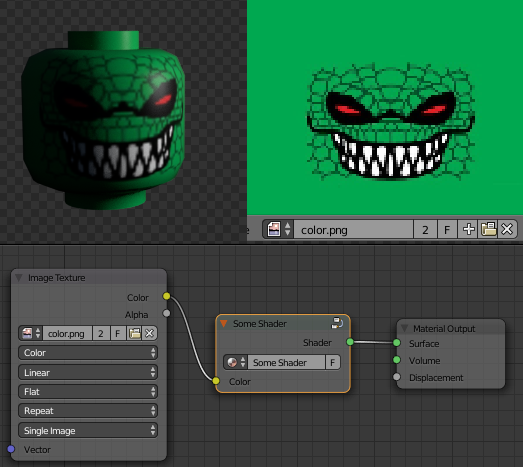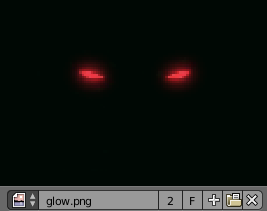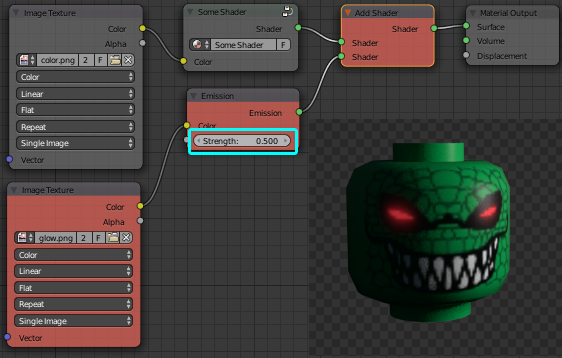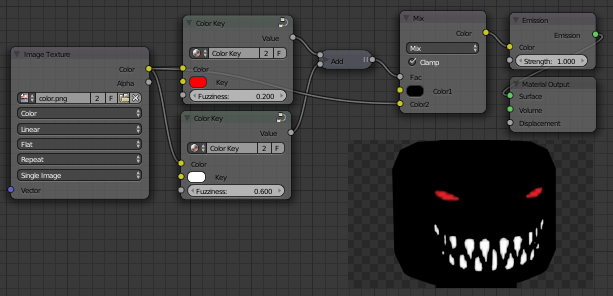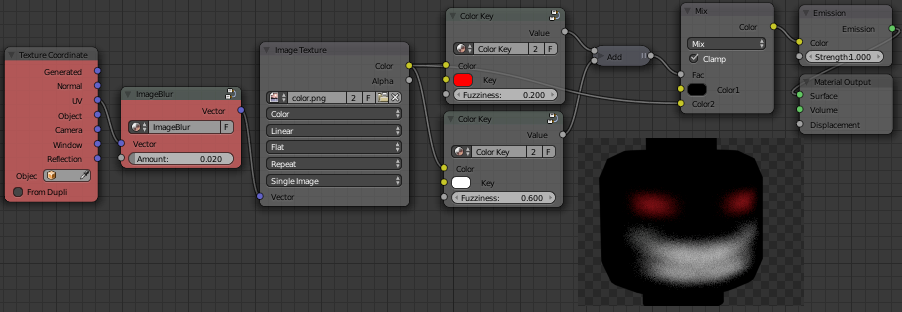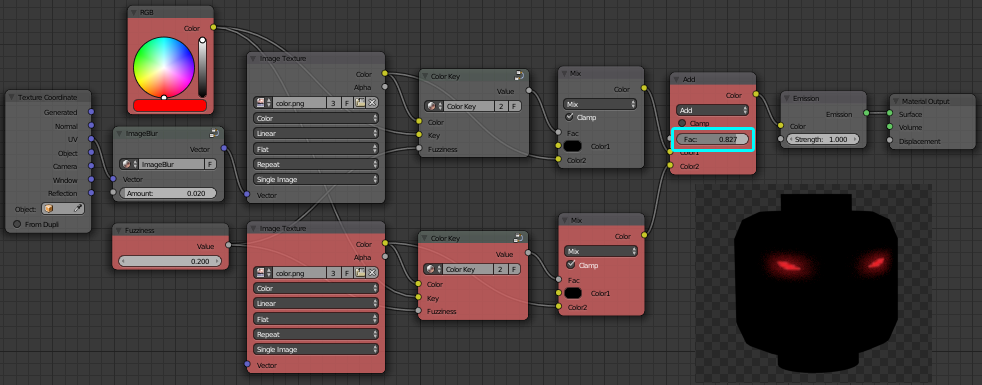You have 3 options to create the glow:
Define the glow with a texture and use that as Emission shader added to your model. The glow haze has to be "baked" into such texture. Limitation: There is no glow outside of object's silhouette.
This is our starting point:
We need to define the glow with a glow texture - it should look like this:
- define the color of the glow (you can have different color glows in one texture)
- size of glow haze with amount of blurring
- and amount of glow with brightness
Here we made both eyes glow. The emission is added to your previous shader:Keep the emission strength between 0 and 1.
Advanced:
You don't have to necessarily make a glow texture, it is possible to extract it from your color texture with nodes inside Cycles to make a procedural glow:
Let's make a basic Color Key node based off color difference:
Next we can key out multiple (or single) colors into a mask and use it on the original color texture to extract areas to glow (example with eyes and teeth):
Now only the glow haze is missing, which is easy to do. Get the ImageBlur node from B°wide node pack or make it yourself:
It is noising the image mapping vectors, so use like this:
Now we just need to combine (add together) the un-blurred and blurred to get our glow (only kept the eyes and deleted the teeth - was just too many nodes to show):
Use with your shader as before - this is the procedural result(s):
Render a mask (with render layers for example) and add the glow in compositor with Glare node set to Fog Glow. There will be glow outside of object's silhouette but the result won't be physically correct.
It is very similar as with the cycles procedural nodes, you also don't have to render some glow mask but instead key it out from colors (which might not be accurate though because lighting can affect the model colors).
Add a volumetric fog environment into your scene to get physically correct glow. Your eyes have to have emissive material also but the glow haze is not painted in.
2. Render a mask (with render layers for example) and add the glow in compositor with Glare node set to Fog Glow. There will be glow outside of object's silhouette but the result won't be physically correct.
It is very similar as with the cycles procedural nodes, you also don't have to render some glow mask but instead key it out from colors (which might not be accurate though because lighting can affect the model colors).
3. Add a volumetric fog environment into your scene to get physically correct glow. Your eyes have to have emissive material also but the glow haze is not painted in.

